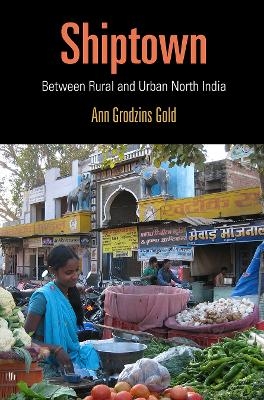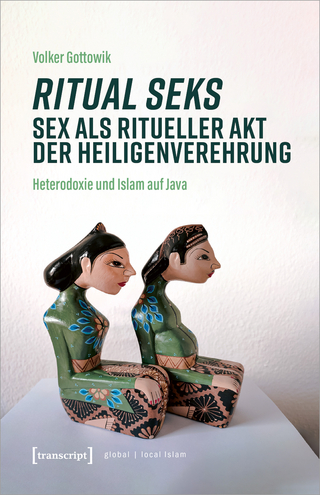
Shiptown
Between Rural and Urban North India
Seiten
2017
University of Pennsylvania Press (Verlag)
978-0-8122-4925-5 (ISBN)
University of Pennsylvania Press (Verlag)
978-0-8122-4925-5 (ISBN)
Ann Grodzins Gold weaves together an integrated series of ethnographic sketches depicting the distinctive nature of non-urban, non-rural places; the impact locality has on belonging; the negotiations of difference required in a pluralistic society; and the ways a changing environment permeates experiences of self and place.
Jahazpur is a small market town or qasba with a diverse population of more than 20,000 people located in Bhilwara District in the North Indian state of Rajasthan. With roots deep in history and legend, Shiptown (a literal translation of landlocked Jahazpur's name) today is a subdistrict headquarters and thus a regional hub for government services unavailable in villages. Rural and town lives have long intersected in Shiptown's market streets, which are crammed with shopping opportunities, many designed to allure village customers. Temples, mosques, and shrines attract Hindus and Muslims from nearby areas. In the town's densely settled center—still partially walled, with arched gateways intact—many neighborhoods remain segregated by hereditary birth group. By contrast, in some newer, more spacious residential areas outside the walls, persons of distinct communities and religions live as neighbors. Throughout Jahazpur municipality a peaceful pluralism normally prevails.
Ann Grodzins Gold lived in Santosh Nagar, the oldest of Shiptown's new settlements, for ten months, recording interviews and participating in festival, ritual, and social events—public and private, religious and secular. While engaged with contemporary scholarship, Shiptown is moored in the everyday lives of the town's residents, and each chapter has at its center a specific node of Jahazpur experience. Gold seeks to portray how neighborly relations are forged and endure across lines of difference; how ancient hierarchical social structures shift in major ways while never exactly disappearing; how in spite of pervasive conservative family values, gender roles are transforming rapidly and radically; how environmental deterioration affects not only public health but individual hearts, inspiring activism; and how commerce and morality keep uneasy company. She sustains a conviction that, even in the globalized present, local experiences are significant, and that anthropology—that most intimate and poetic of the social sciences—continues to foster productive conversations among human beings.
Jahazpur is a small market town or qasba with a diverse population of more than 20,000 people located in Bhilwara District in the North Indian state of Rajasthan. With roots deep in history and legend, Shiptown (a literal translation of landlocked Jahazpur's name) today is a subdistrict headquarters and thus a regional hub for government services unavailable in villages. Rural and town lives have long intersected in Shiptown's market streets, which are crammed with shopping opportunities, many designed to allure village customers. Temples, mosques, and shrines attract Hindus and Muslims from nearby areas. In the town's densely settled center—still partially walled, with arched gateways intact—many neighborhoods remain segregated by hereditary birth group. By contrast, in some newer, more spacious residential areas outside the walls, persons of distinct communities and religions live as neighbors. Throughout Jahazpur municipality a peaceful pluralism normally prevails.
Ann Grodzins Gold lived in Santosh Nagar, the oldest of Shiptown's new settlements, for ten months, recording interviews and participating in festival, ritual, and social events—public and private, religious and secular. While engaged with contemporary scholarship, Shiptown is moored in the everyday lives of the town's residents, and each chapter has at its center a specific node of Jahazpur experience. Gold seeks to portray how neighborly relations are forged and endure across lines of difference; how ancient hierarchical social structures shift in major ways while never exactly disappearing; how in spite of pervasive conservative family values, gender roles are transforming rapidly and radically; how environmental deterioration affects not only public health but individual hearts, inspiring activism; and how commerce and morality keep uneasy company. She sustains a conviction that, even in the globalized present, local experiences are significant, and that anthropology—that most intimate and poetic of the social sciences—continues to foster productive conversations among human beings.
Ann Grodzins Gold is Thomas J. Watson Professor of Religion and Professor of Anthropology at Syracuse University.
| Erscheinungsdatum | 10.07.2017 |
|---|---|
| Reihe/Serie | Contemporary Ethnography |
| Zusatzinfo | 3 illus. |
| Verlagsort | Pennsylvania |
| Sprache | englisch |
| Maße | 152 x 229 mm |
| Themenwelt | Sozialwissenschaften ► Ethnologie ► Völkerkunde (Naturvölker) |
| Sozialwissenschaften ► Soziologie | |
| ISBN-10 | 0-8122-4925-9 / 0812249259 |
| ISBN-13 | 978-0-8122-4925-5 / 9780812249255 |
| Zustand | Neuware |
| Haben Sie eine Frage zum Produkt? |
Mehr entdecken
aus dem Bereich
aus dem Bereich
Schweden : Ambiguitäten verhandeln - Tolerieren als soziale und …
Buch | Softcover (2023)
Brill Schöningh (Verlag)
49,90 €
Buch | Softcover (2023)
transcript (Verlag)
54,00 €


